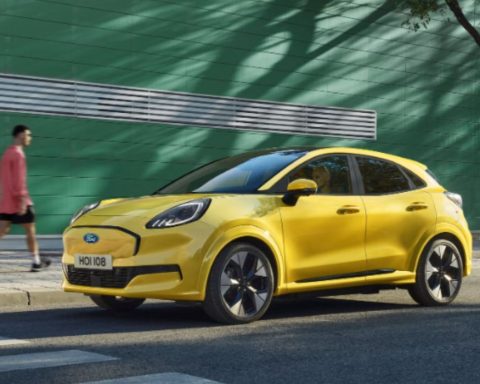Last week, news emerged that the Chinese electric-vehicle maker BYD Co. has told Ottawa it plans to enter the Canadian market. That’s great news.
Affordable electric vehicles that are made in China could open up the Canadian EV market to millions of middle-class families.
But the news comes at a fraught time. Following a similar move by the United States, the Canadian government is considering punitive tariffs on Chinese EVs, with the consultation period August 1.
Such tariffs would be a mistake. Chinese EVs should be accepted for sale in Canada without the tariffs, as long as they meet Canadian standards and are made by companies that do not employ forced labour in their supply chains.
Every year, Canadians buy more than 1.5 million new cars, most of them from foreign countries, and some of them made in China.
Canadian households want and need affordable electric vehicles, sooner rather than later. And reasonably affordable Chinese electric sedans and mid-sized crossovers are available for export to Canada now.
The charged debate over whether to deny Canadians access to affordable Chinese EVs is triggering claims that without a high tariff, China would flood the market and put Canadian auto workers out of work.
But those risks are being exaggerated. Nearly 90 per cent of the cars assembled by Canadian auto workers are exported, and that’s still going to be the case for EVs.
While it’s realistic to expect some job losses among Canadian auto workers from more imports of affordable Chinese EVs, they would be minimal, on the order of 2 per cent. And more importantly, there would also be jobs created.
If Chinese EVs grew to 20 per cent of new car sales over the next five years, by 2030 it would save the families that bought the vehicles $9-billion in fuel and maintenance costs. The money would recirculate in local economies, generate more than $1.5-billion in revenue for Canadian utilities and eliminate 12 million tonnes of greenhouse gas emissions. Even under a wide range of assumptions, the net effect would be more wealth circulating in the Canadian economy.
There is not much risk that Chinese EVs will “flood the market,” as tariff proponents claim. Chinese automakers are more interested in margin than market share. In Australia, Europe and other markets, they’re pricing their products competitively.
The arrival of Chinese EVs into Canada would make it an affordable option for families looking for a new car for $35,000 to $45,000. Otherwise, they will have to turn to a combustion vehicle that would lock in poorer performance, higher fuel and maintenance costs, air pollution and greenhouse gas emissions that would persist well into the 2030s.
RELATED:
- Electrifying driving in Canada will cost just 10% more than what we already spend
- Want to make EVs more accessible? Share them
- GREEN house effect: Calculate the savings from electrifying your home
The risk of opening a back door to the U.S. market by allowing cars made in China to be sold in Canada is a red herring. It would be easy for the United States to apply its tariffs on any Chinese-made vehicles (using the vehicle identification number) trying to cross the border for sale.
And with regard to any Chinese-made batteries or parts short of a fully assembled vehicle, it would be relatively straightforward for Canada to apply surgical tariffs on these parts to stay onside with the United States-Mexico-Canada Agreement, without preventing Canadian consumers from purchasing affordable EVs.
It’s true that China’s electricity supply used to make EVs is dirtier than North America’s, but the pollution the EVs save during their lifetime far outweighs that disadvantage.
The charge that Chinese cars are made with forced labour must be taken seriously. It is already illegal to import products tainted with forced labour, although Canada has yet to stop any Chinese products from entering the country under this law. In any case, this law should be enforced at the individual company level, rather than by a tariff that would shut out any Chinese-made EV, including those made in China by Western carmakers like Tesla, Honda and General Motors.
The switch to electric cars and trucks is accelerating exponentially around the world, and EV supply chains are routinely subsidized by governments, nowhere with greater vigour than in Canada. Allowing Chinese-made EVs into Canada will broaden the market for EVs, help bring the country to the forefront of an economic megatrend, and spur competition.
The electricity needed to charge those cars will generate cash flow for Canadian utilities, helping them prepare for the growing role of electricity in our energy system. More EVs will also increase the pressure on apartment building owners, condominium corporations and municipalities to build out the charging infrastructure that we need.
From time to time, an issue comes along where Canada’s interests do not align with those of the United States,’ and where asserting an independent Canadian policy is warranted. This is one of those times. Let them in.
This piece was first published in The Globe and Mail.
Toby A.A. Heaps is CEO of Corporate Knights and Ralph Torrie is the Director of Research at Corporate Knights.







